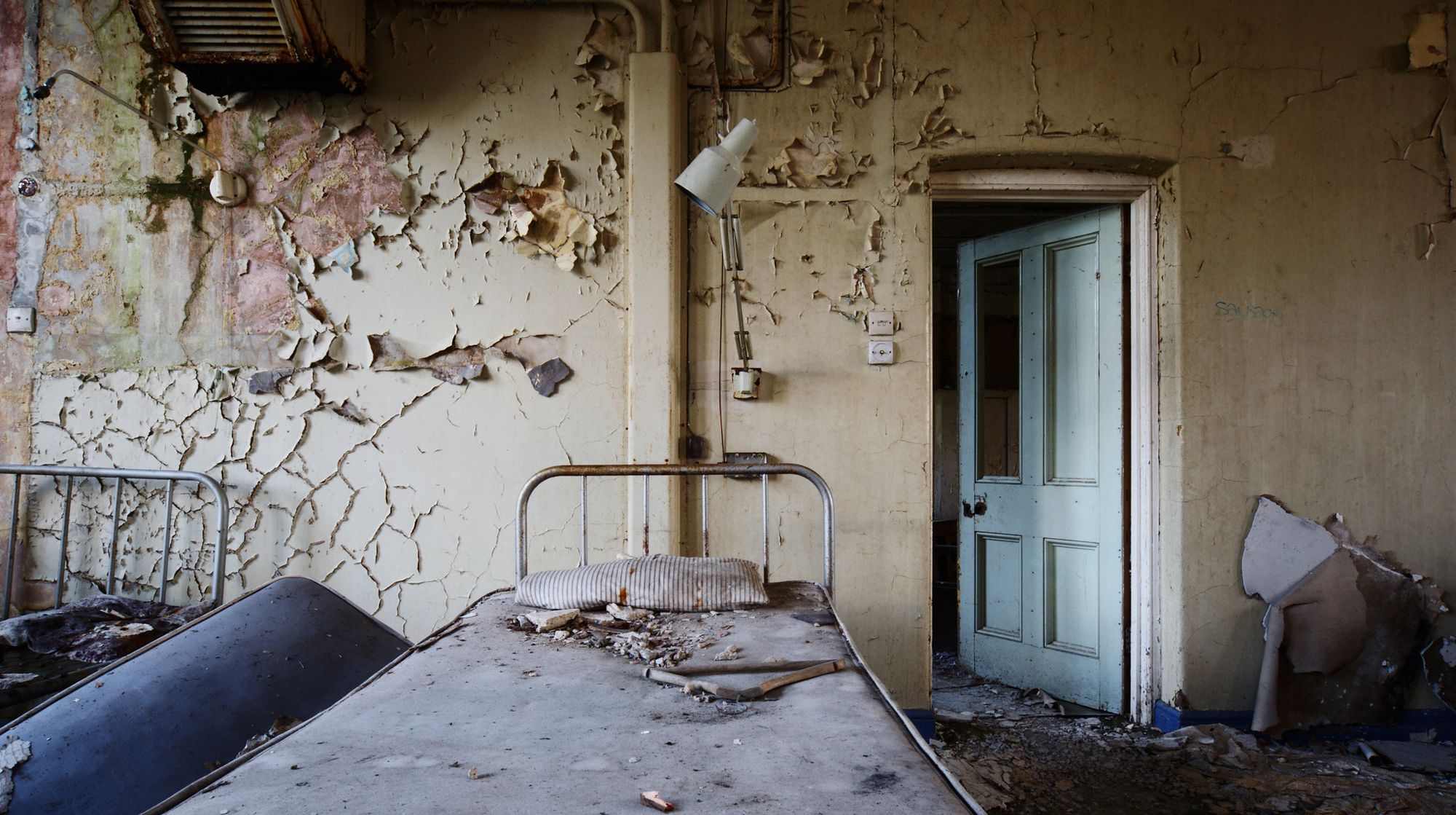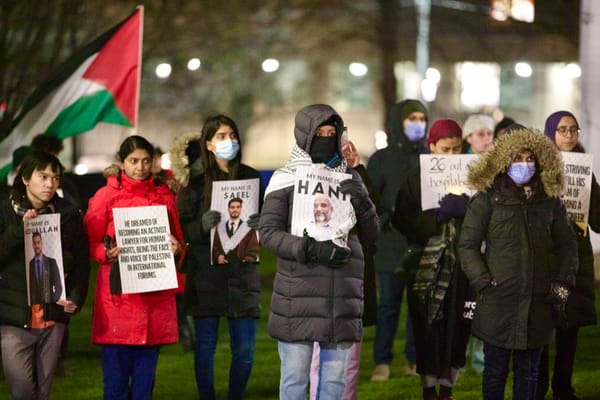Last month, Toronto’s Centre for Addiction and Mental Health (CAMH) released a public statement on police interactions with those in mental health crises. Though Ejaz Choudry — a Mississauga man living with schizophrenia who was killed by police during a mental health crisis earlier that month — wasn’t specifically mentioned, the memo was released shortly after his death. Within it, CAMH explicitly calls for trained mental health workers, not police, to be the first responders to mental health-related crises, including people experiencing psychosis or threatening self-harm.
This statement was quickly met with significant acclaim, including from mental health advocate Mark Henick, the president and CEO of Holland-Bloorview Kids Rehabilitation Hospital, Julia Hanigsberg, and the John Howard Society of Ontario, an organization that advocates for prison justice. Many who’ve been anxiously watching the Black Lives Matter protests explode across the United States understand this recommendation as one in line with an abolitionist framework, another necessary part of defunding the police.
Having mental health workers on the frontlines is much more desirable than the current reality, where police that aren’t trained in mental health responses enact violence upon those that call them for help. Statistics show that between 2000 and 2018, at least 70 per cent of Canadians murdered by the police struggled with mental health or substance abuse issues.
However, we need to think critically about what happens after those in crisis are apprehended. The mentally ill may not be killed or criminalized, but their engagement with psychiatry isn’t as far a leap from the criminal justice system as we might think. Psychiatry and its institutions are bound up in the same carceral logic as the police forces they’re claiming they can humanistically replace.
The construction of buildings designed to isolate the mentally ill from the rest of society is a specific socially and culturally bound way of engaging with mental illness. In Canada, we can trace the idea of the mental hospital back to the mid-19th century.
In 1848, the Provincial Lunatic Asylum for Eastern Canada in Saint John’s proudly opened its doors, followed two years later by one in Toronto. These names were eventually swapped out, but the institutions remain —the one in St. John’s is now Centracare, while the one in Toronto is CAMH.
Today, the term “asylum” conjures up associations of political safety, but a couple centuries ago it referred to “a place of refuge for criminals and debtors.” It later shifted to mean buildings that kept “lepers” isolated from society — for society’s safety and their own. These were places where people with debts or communicable diseases were shoved so their communities didn’t decide to kill them. We can glean a lot of the social function of these institutions from how they decided to refer to themselves.
It wasn’t just the institutions, as the system of psychiatry in general was also born out of this model of restricting, removing and restraining those with mental illnesses. In the early 20th century, for example, Alberta and British Columbia created eugenics programs that targeted the mentally ill, both of which weren’t repealed until the mid-70s. Alberta’s program had a significant impact — their Sexual Sterilization Act was used to sterilize more than 2,800 people without their consent.
It’s important to recall that the people carrying out these mandates weren’t cops. They were doctors, nurses and psychiatrists, and they believed this work was for the good of society at large as well as their patients, who they thought just didn’t know well enough to decide for themselves.
Psychiatric care is structured according to a paternalistic logic. If a patient is thought of as a danger to themselves or others, or it’s thought that their condition may “deteriorate” if left to their own devices, they can lose their fundamental human right to free movement. A patient’s care preference, or their feelings on being forcibly detained without access to their daily routines and comforts, are irrelevant.
Every province in Canada has a Mental Health Act outlining the circumstances under which a person’s rights and autonomy can be taken away because of their illness. Only Saskatchewan, Nova Scotia and Newfoundland and Labrador have a criterion stating that if a person is capable of making a treatment decision, they can’t be involuntarily committed. The remainder of the provinces and territories don’t take this capability into account when involuntarily committing patients. In British Columbia, medical directors of psychiatric facilities can even provide consent for their patients when they refuse.
In practice, there are no real ways for the committed to exercise their personal agency. How do you communicate that you don’t consent when nurses are primed to understand what you say as psychotic babble? What personal agency can a person exercise while they’re confined to a room, dressed in a gown and non-slip socks?
Researchers note that even those deemed as capable to make their own treatment decisions rarely exercise that right. In a highly controlled environment like a psychiatric facility, possibilities for exercising personal agency seem scant. Patients want to remain on the good side of their keepers, afraid to push back lest they be labelled non-compliant and have their privileges revoked, or their commitment form renewed. The old idea of the asylum as a place where the ill can be sequestered away for their own good lives on today, despite the pleasant rebranding campaigns.
This sequestering also isn’t neutrally administered. Like police, psychiatric workers can act on racist impulses, even if they use Haldol or Valium instead of a mace or baton. Psychiatry as a field has been rife with racism and white supremacy since its inception.
In the 18th century, slave owners and their doctors made up mental illnesses such as “drapetomania,” pathologizing the desire of enslaved people to run away as a disorder. In 1968, the American Psychiatric Association (APA) changed the definition of schizophrenia to include aggression, which critics have claimed was done to pathologize the righteous anger of civil rights activists.
Though the APA continues to deny this was done to target Black political leaders, the diagnosis did materially work in those ways. According to declassified documents, the FBI diagnosed Malcolm X with “pre-psychotic paranoid schizophrenia.” The political beliefs and tactics of other Black militant leaders, such as NAACP chapter head Robert Williams, were similarly pathologized using psychiatry.
Psychiatrists today may be hesitant to explicitly express racism, but psychiatric racism that views Black men as dangerous, violent and in need of sedation now manifests in more insidious ways. Studies have consistently found that Black patients are more likely to be prescribed, be given higher doses and receive less safe older versions of antipsychotic drugs than white people. Long-term antipsychotic use is associated with lower mortality, but also metabolic disturbance and a swath of other neurological symptoms including tardive dyskinesia, a syndrome that causes involuntary twitches and repetitive movements.
Research from the U.S. has also found that rates of involuntary psychiatric commitment are consistently higher for Black people than for white people. Demographic research in Ontario, meanwhile, has found that immigrants from non-Western countries, especially the Caribbean and Africa, experience higher rates of involuntary commitment.
Psychiatry has also long been a site for homophobia and transphobia to run rampant under the guise of treatment. Homosexuality was removed from the Diagnostic and Statistical Manual of Mental Disorders in 1973, but the pathologizing of queer people didn’t come to a halt there. It lives on in conversion therapy, which is a psychiatric attempt to turn gay, queer or trans people heterosexual or cisgender through forms of psychoanalysis, electroconvulsive therapy, lobotomies and other similarly horrifying methods.
Though psychiatric organizations in Canada have publicly proclaimed their opposition to conversion therapies, as of today there exists no nationwide ban. Provincial bans exist in Ontario, Nova Scotia and Prince Edward Island.
One of the central issues with modern conversion therapy is that the practice, born out of psychiatry, now extends far beyond the walls of the institution. Though it’s less common now for psychiatrists to condone it, religious groups, community organizations and therapists have taken up the baton. It’s difficult to gather exact estimates on how many people have undergone conversion therapy, but a recent survey of GBTQ2 men in Canada discovered that 8 per cent have experienced conversion therapy.
These violences aren’t committed by armed tools of the state. They’re carried out by medical workers and researchers who we believe to have benevolent intentions. The conversion therapist who’s inflicting a lifetime of internalized shame and self-hatred on his patients remains convinced that his work is necessary and kind. The psychiatrist who’s renewing the involuntary committal forms for his wards believes that it’s for the safety and well-being of those tired, shaken residents.
The vast majority of the time these people aren’t trying to cause harm. They don’t have guns and handcuffs. For these reasons it can be difficult to wrap one’s head around the damage psychiatry can inflict onto the most marginalized communities. But this invisibility and insidiousness is what can make psychiatry, at times, all the more dangerous.
Psychiatry and the carceral system are both external to our communities, employed as ways to contain and isolate that which we have given up on healthily integrating. Psychiatric intervention isn’t a sign of progress. It’s what happens when our communities have miserably failed at helping those who need it most.
It’s inevitable that we’d yearn for a system grounded in empathy and compassion to offset the sheer ineffective brutality of the police. God knows we deserve a system like that. Unfortunately, we’ll have to look elsewhere than psychiatry.






